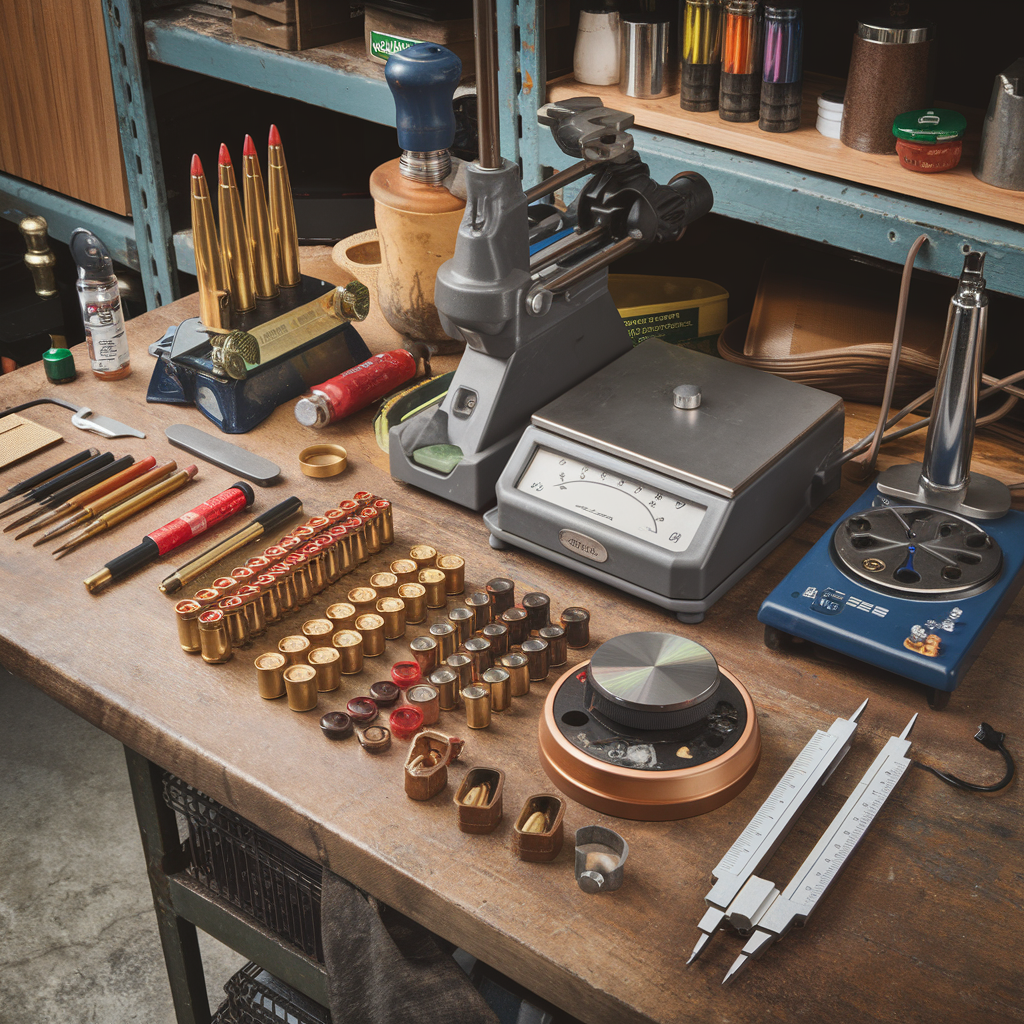A Beginner’s Guide to Reloading Your Own Ammunition

Reloading your own ammunition is a rewarding and cost-effective hobby that allows firearm owners to customize their ammunition for optimal performance. Whether you are a casual shooter or a competitive marksman, learning to reload can improve accuracy, save money, and deepen your understanding of firearms. This guide will provide you with everything you need to get started.
Why Reload Your Own Ammunition?
There are several reasons people choose to reload their own ammo:
- Cost Savings: Over time, reloading can be more affordable than buying factory ammunition.
- Custom Load Development: Tailor your rounds for specific firearms, enhancing accuracy and reliability.
- Supply Consistency: Ensure a steady supply of ammunition during times of scarcity.
- Personal Satisfaction: Reloading offers a hands-on way to engage with shooting sports and firearms maintenance.
Essential Equipment for Beginners
Getting started with reloading requires an investment in equipment. Below is a basic list of tools you will need:
- Reloading Press: A single-stage press is ideal for beginners due to its simplicity and affordability.
- Dies: These metal components resize the brass and seat the bullet in place.
- Powder Measure: Accurately dispenses the correct amount of powder for each round.
- Case Trimmer: Ensures brass is the correct length for safe and accurate reloading.
- Priming Tool: Seats the primer in the empty cartridge case.
- Calipers: Used to measure case dimensions, ensuring proper fit and function.
- Reloading Manual: Provides data and specifications necessary for safe reloading.
Many companies offer starter kits that include these essential tools, making it easier for beginners to get all the necessary equipment in one package.
Step-by-Step Reloading Process
Reloading ammunition involves several important steps. Follow this process carefully to ensure safety and consistent results:
1. Collect and Inspect Brass
Gather spent brass casings and inspect them for cracks, dents, or other damage. Discard any brass that shows signs of wear or damage to prevent malfunctions during use.
2. Clean the Brass
Use a tumbler or ultrasonic cleaner to remove dirt, carbon, and residue from the brass. Clean brass ensures proper function in your dies and firearm.
3. Resize and Deprime
Using your resizing die, resize the brass back to its original dimensions. While resizing, the old primer will be removed from the base of the case.
4. Trim and Deburr
If needed, trim the brass to the correct length using a case trimmer. After trimming, deburr the edges to ensure smooth seating of the bullet.
5. Insert New Primer
Use your priming tool to seat a new primer into the base of the cartridge. Ensure the primer is seated flush or slightly below the surface of the cartridge.
6. Measure and Add Powder
Using a powder measure or scale, add the correct amount of gunpowder specified in your reloading manual. Be precise—too much powder can be dangerous, while too little can cause malfunctions.
7. Seat the Bullet
Place the bullet on top of the cartridge and use the seating die to press it into place. Ensure that the bullet is seated at the correct depth as specified in your manual.
8. Check the Finished Round
Inspect your finished round for proper dimensions and overall quality. Use calipers to measure the overall length, confirming it meets specifications.
Safety Tips for Reloading
Safety should always be your top priority when reloading ammunition. Follow these tips to stay safe:
- Wear Safety Gear: Always wear eye protection while handling primers and gunpowder.
- Use a Reliable Manual: Follow the data provided in a trusted reloading manual to avoid dangerous mistakes.
- Work in a Clean Space: Keep your reloading area organized and free of distractions.
- Avoid Mixing Powders: Never mix different types of gunpowder or use powder not specified for your load.
- Inspect Every Component: Check primers, powder, and brass for damage or inconsistencies before use.
Common Mistakes to Avoid
Beginners often make errors that can affect the quality and safety of their ammo. Here are some common mistakes and how to avoid them:
- Skipping Brass Inspection: Always check for cracks or deformities in your brass before reloading.
- Overcharging Powder: Double-check your powder charges to ensure they match your manual’s specifications.
- Incorrect Bullet Seating: Ensure bullets are seated at the correct depth to avoid malfunctions.
- Failing to Label Ammunition: Clearly label reloaded ammo with caliber, powder type, and weight to avoid confusion later.
Benefits of Practice and Patience
Reloading is a skill that improves with practice. Start with small batches to gain experience and confidence. Over time, you’ll find the process becomes quicker and more intuitive. Learning to reload your own ammunition is an ongoing journey that can greatly enhance your shooting experience.
Conclusion
Reloading your own ammunition is a practical and rewarding pursuit for firearm enthusiasts. By investing in the right tools, following a reliable reloading process, and prioritizing safety, you can create custom ammo that meets your needs and preferences. Start small, stay consistent, and enjoy the satisfaction of shooting rounds you’ve crafted yourself. For more tips, tools, and guides, explore the resources available at 2AGun.com!



